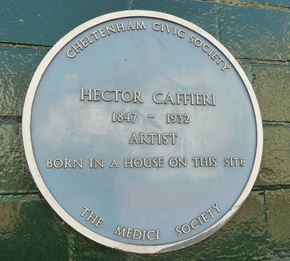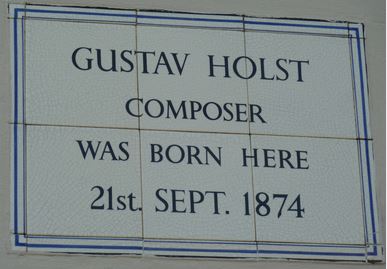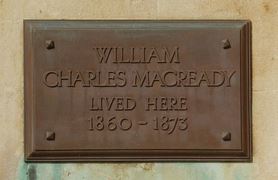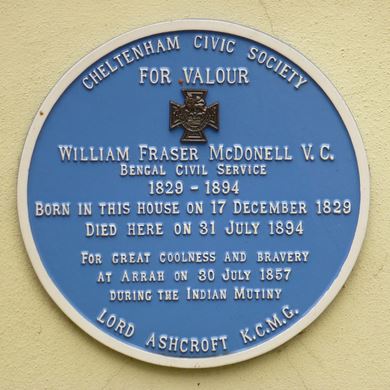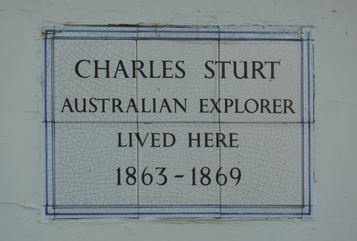Blue Plaques and other commemorative plaques in Pittville
Dr Grace Billings, doctor (1872 – 1957)
6 Evesham Road (plaque unveiled 2015)
Dr Grace Billings (1872 - 1957) was the first woman to set up a medical practice in Cheltenham, at 3 Pittville Parade (now 6 Evesham Road) in 1899, having qualified as a doctor the previous year. She became a prominent figure in the medical establishment and was a supporter of the women's suffrage movement in the town in the years leading up to the First World War. During the war she was the Medical Officer at St Martin's VAD hospital, the only woman to hold such a post in Cheltenham. For more information on Grace Billings see her short biography here.

Hector Caffieri, artist (1847 – 1932)
21 Prestbury Road (plaque unveiled 1986)
Caffieri was a Victorian artist, famous for his landscapes and still lifes. He exhibited 38 works at the Royal Academy between 1875 and 1901; The Wilson has a painting by him of Boulogne Harbour in its collection. Caffieri was born in Cheltenham in 1847 at 3 Portland Place. The house no longer exists, but when the plaque was unveiled in 1986 it was assumed to be where 21 Prestbury Road now stands. However it was subsequently discovered that Caffieri’s house was located near North Place.
Florence Earengey, suffrage campaigner and barrister (1877 - 1963)
3 Wellington Square (plaque unveiled 2018)
Florence Earengey lived at 3 Wellington Square from 1899 to 1911. She was active in the women's suffrage movement in Cheltenham, becoming first Secretary and then President of the Women's Freedom League, and taking part in the census evasion campaign of 1911. After the First World War she left Cheltenham and had a distinguished career as a barrister; she was President of the National Council of Women of Great Britain and published a book on the legal and economic status of women. For more information see a short account of her life here.

Gustav Holst, composer (1874 – 1934)
4 Clarence Road (plaque unveiled 1949)
The composer of The Planets was born at 4 Clarence Road in 1874 and lived there until 1882. His birthplace is now a museum. See Pittville History Works page for Gustav Holst and also his Wikipedia entry.
William Charles Macready, actor (1793 – 1873)
6 Wellington Square (plaque unveiled 1927)
Macready was the leading actor and theatre manager of his time, particularly celebrated for Shakespearean roles. He retired to 6 Wellington Square in 1860 and lived there until his death. He gave lectures and readings in Cheltenham and his friend Charles Dickens stayed with him on several occasions. (See his Wikipedia entry.)
William Fraser McDonell, VC (1829 – 94)
Pittville House, Wellington Road (plaque unveiled 2009)
McDonell is one of only five civilians to have been awarded the Victoria Cross, the highest award for gallantry in the face of the enemy. He was born at Pittville House in 1829 and joined the Bengal Civil Service. As a 27-year old civil servant he was caught up in the Indian Mutiny and saved the lives of 35 European soldiers during the British retreat from Arrah. He later returned to Cheltenham and died at Pittville House in 1894. See Pittville History Works page for William Fraser McDonell and also his Wikipedia entry.
Charles Sturt, explorer (1795 – 1869)
19 Clarence Square (plaque unveiled 1948)
Sturt led a number of expeditions into the unexplored interior of Australia between 1828 and 1844, during which he discovered and named the Murray and Darling rivers. He retired to 19 Clarence Square in 1863 and lived there until his death. (See his Wikipedia entry.)
